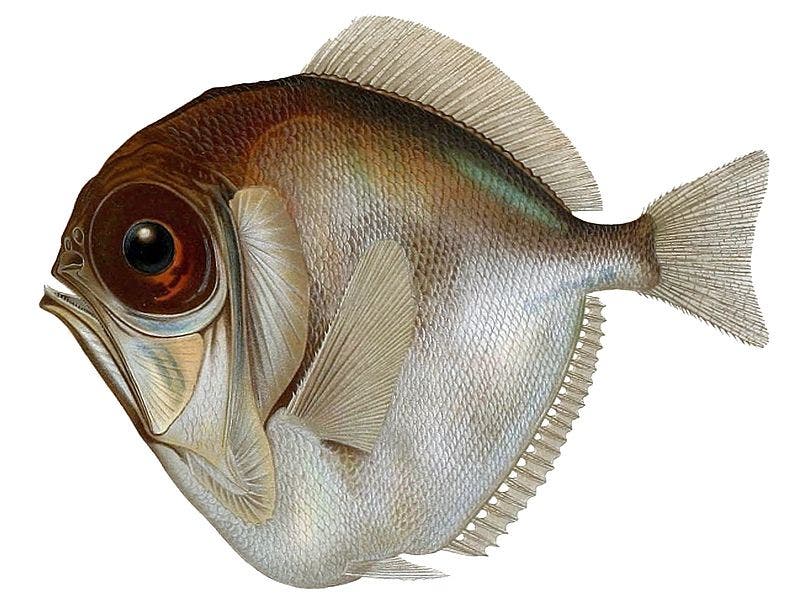The finding really shakes up the “dogma of deep-sea vision,” researchers say.
The deeper you go underwater, the scarcer light gets. As a result, vision isn’t really a prime attribute — and this happens in all low-light environments. In caves, for instance, where light also doesn’t come through, the eyes of fish (and other creatures) disappear after only a few generations. It makes a lot of sense: eyes are “expensive” to produce and maintain, and if there is little incentive to use them, they might degrade and even disappear in time.
This is why researchers were stunned to see that at least one species of deep-sea fish has excellent vision, capable of picking up a broad range of light wavelengths and may even see color.
Researchers from the University of Maryland analyzed the genomes of 101 species, 13 of which had genes that would allow them to see in color. One species in particular, the silver spinyfin, has a huge assortment of genes that enable it to pick up on many different wavelengths of light.
“This is the first paper that examines a diverse set of fishes and finds how versatile and variable their visual systems can be,” said Karen Carleton, a biology professor at the University of Maryland and co-author of the paper. “The genes that determine the spectrum of light our eyes are sensitive to turn out to be a much more variable set of genes, causing greater visual system evolution much more quickly than we anticipated.”

The tube-eye fish, Stylephorus chordatus, can use five different rod opsins within its eyes. The long cylindrical shape of its eyes increases light capture and also enables the fish to move the eyes from a horizontal to a vertical position. Image credit: Dr. Wen-Sung Chung, University of Queensland, Australia.
As we’re taught in school, cone cells are responsible for color vision, and rod cells are responsible for detecting brightness (especially in dim conditions). In this study, however, researchers found that that’s not always the case. Both rods and cones contain light-sensitive pigments called opsins. These opsins absorb specific wavelengths and convert them into electrical signals that the brain can interpret. The number and type of opsins determine the colors that an animal can see.
They discovered that some fish contained multiple types of rod opsins, which raises the possibility that they have rod-based color vision. In 99% of all vertebrates, rods express one type of light-sensitive opsin, which means that in low-light conditions, they are colorblind — but that might not be the case for this fish. The silver spinyfish, for instance, has a whopping 38 opsin genes.
“This was very surprising,” Carleton said. “It means the silver spinyfin fish have very different visual capabilities than we thought. So, the question then is, what good is that? What could these fish use these spectrally different opsins for?”
So what exactly do they need this capability for? At a depth of over 1,000 meters, where these creatures live, the last shred of sunlight is gone. But, the traditional belief that there is no light at this depth was disproven by recent research, which showed that, even at these depths, faint flashes of bioluminescence are occasionally visible, coming from a variety of creatures including shrimp, bacteria, octopus, and other fish.
Researchers believe that some fish may have developed better eyesight to detect some types of prey, or avoid their own predators.
“It may be that their vision is highly tuned to the different colors of light emitted from the different species they prey on,” Carleton concludes.
The study “Vision using multiple distinct rod opsins in deep-sea fishes” has published in Science.










